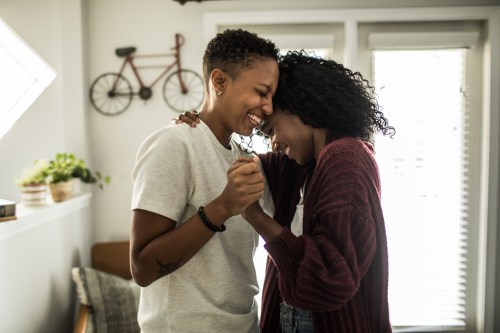What Is Insecure Attachment Style—and How Do You Overcome It to Build Healthy Relationships?
If you struggle with insecure attachment, the good news is that you can change those patterns and develop healthy relationships. Here’s how.

If you’ve been in a relationship before, you’ve likely noticed that everyone operates differently within them. Some people are self-confident and have no problem expressing their feelings with their significant others. In contrast, others are codependent or avoidant and have difficulty being fully vulnerable. These are prime examples of attachment styles in action. If you struggle with the latter, referred to as insecure attachment style, the good news is that you can change those thought and behavior patterns and develop healthy relationships.
Experts in This Article
neuropsychologist and founder of Comprehend the Mind
But first, it’s essential to understand what insecure attachment is and where it comes from, the different types, and how it manifests in relationships. To help with that, we chatted with Sanam Hafeez, PsyD, a neuropsychologist and director of Comprehend the Mind, a diagnostic and treatment center for neuropsychological, psychiatric, and educational difficulties that’s based in New York City.
What is insecure attachment?
People with insecure attachment “struggle to make emotional connections with others, and they often are anxious about expressing vulnerability because they believe it will result in abandonment,” Dr. Hafeez explains. As for what causes it, she says your attachment style forms during childhood, and an insecure one is typically caused by an inconsistent and unsupportive environment where the individual didn’t receive the proper love and affection from their parents or caretakers.
Conversely, a secure attachment style then is defined as having healthy, trusting relationships. “These individuals have high self-esteem and are comfortable expressing their feelings with their partners,” Dr. Hafeez says.
How insecure attachment manifests in relationships
There are three types of insecure attachment styles: anxious, avoidant, and disorganized. Each presents itself differently in adult relationships.
Anxious
This attachment style is characterized by being codependent, demanding, overthinking and second-guessing whether or not you’ve contributed too little or too much in a relationship, says Dr. Hafeez. “As a child, those with anxious insecure attachment could not rely on their parents or caregivers to be present when needed,” she adds. “These children become clingy, demanding, and distressed in hopes that they will capture their parents’ attention.”
Avoidant
As its name suggests, Dr. Hafeez says people with this attachment style typically avoid relationships and rarely allow themselves to get close to others because they are afraid of commitment. This can stem from having parents who did not properly attend to their needs during childhood. “Rather than comforting their children, these parents ignored their child’s wants and needs and did not help them with challenging situations,” Dr. Hafeez says. “As a result, these children started to shut down their feelings and failed to rely on anyone other than themselves.”
Disorganized
Like avoidant insecure attachment style, this attachment style is also fearful of relationships. The difference, Dr. Hafeez points out, is that those with a disorganized insecure attachment style actually desire a relationship, while those with an avoidant insecure attachment style don’t. She adds that most individuals with this attachment style experienced some form of trauma during childhood. “These children feared their parents, so they treated them with aggression and declined their care,” Dr. Hafeez says.
And, because we humans are multidimensional, Dr. Hafeez says it is possible to have more than one insecure attachment style, depending on the individual’s childhood and the situation. For instance, Dr. Hafeez shares that if someone is in a familiar situation where they feel comfortable, they will likely exhibit a more secure side of themselves. In a different scenario, say their partner gives them a reason to question their loyalty, they may become anxious and avoidant.
How to overcome insecure attachment
If you struggle with insecure attachment, Dr. Hafeez says it’s crucial that you first identify any childhood trauma that could have affected emotional development. Without this vital step, you’ll continue struggling within relationships. For help with this, she caveats, it’s important to speak to a professional who can help you unpack things. Once you pinpoint the underlying trauma, Dr. Hafeez says you can gradually improve how you see yourself and your environments, and ultimately, be able to form secure and healthy relationships.
Furthermore, as people with insecure attachment styles tend to feel uncomfortable in emotionally intimate situations, Dr. Hafeez also recommends gradual exposure to these types of scenarios to overcome the discomfort. For instance, if you struggle to express your thoughts and feelings with your partner, she suggests playing the “36 questions to fall in love” game. “This exercise requires you to face your partner and answer questions that help you explore your more profound connection,” Dr. Hafeez says. “This activity could be helpful because it forces you to open up and be vulnerable rather than decide to do it independently.”
Oh hi! You look like someone who loves free workouts, discounts for wellness brands, and exclusive Well+Good content. Sign up for Well+, our online community of wellness insiders, and unlock your rewards instantly.










